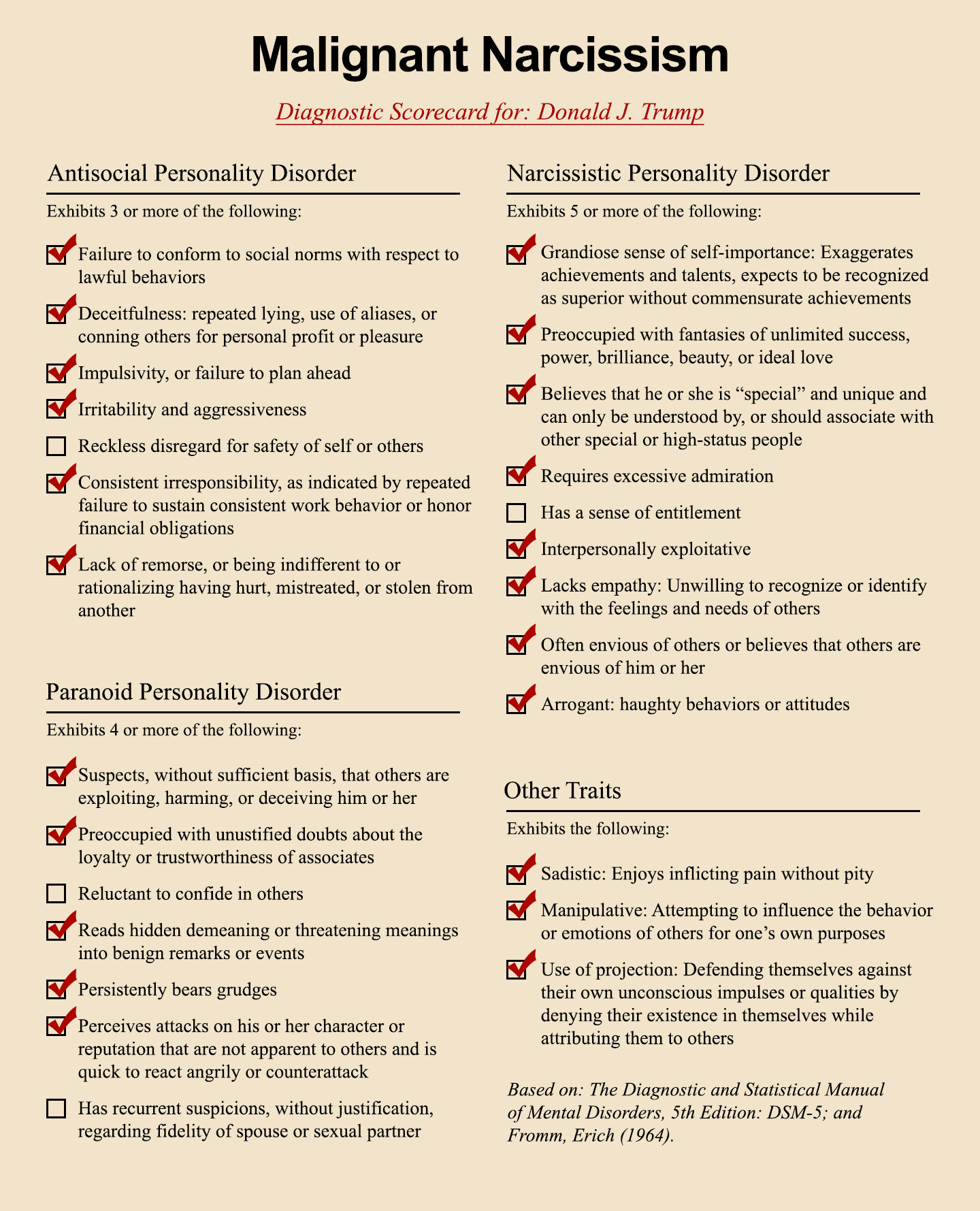Psychologists
define the 'dark core of personality'
University of Copenhagen
 Egoism, Machiavellianism,
narcissism, psychopathy, sadism, spitefulness, and others are among the traits
that stand for the malevolent dark sides of human personality.
Egoism, Machiavellianism,
narcissism, psychopathy, sadism, spitefulness, and others are among the traits
that stand for the malevolent dark sides of human personality.
As results from
a recently published German-Danish research project show, these traits share a
common 'dark core'. So, if you have one of these tendencies, you are also
likely to have one or more of the others.
Both world history and everyday life
are full of examples of people acting ruthlessly, maliciously, or selfishly.
In
psychology as well as in everyday language, we have diverse names for the
various dark tendencies human may have, most prominently psychopathy (lack of
empathy), narcissism (excessive self-absorption), and Machiavellianism (the
belief that the ends justify the means), the so-called 'dark triad', along with
many others such as egoism, sadism, or spitefulness.
Although at first glance there
appear to be noteworthy differences between these traits -- and it may seem
more 'acceptable' to be an egoist than a psychopath -- new research shows that
all dark aspects of human personality are very closely linked and are based on
the same tendency.
As the new research reveals, the
common denominator of all dark traits, the D-factor, can be defined as the
general tendency to maximize one's individual utility -- disregarding,
accepting, or malevolently provoking disutility for others -- , accompanied by
beliefs that serve as justifications.
In other words, all dark traits can
be traced back to the general tendency of placing one's own goals and interests
over those of others even to the extent of taking pleasure in hurting other's
-- along with a host of beliefs that serve as justifications and thus prevent
feelings of guilt, shame, or the like.
The research shows that dark traits in
general can be understood as instances of this common core -- although they may
differ in which aspects are predominant (e.g., the justifications-aspect is
very strong in narcissism whereas the aspect of malevolently provoking
disutility is the main feature of sadism) .
Ingo Zettler, Professor of
Psychology at the University of Copenhagen, and two German colleagues, Morten
Moshagen from Ulm University and Benjamin E. Hilbig from the University of
Koblenz-Landau, have demonstrated how this common denominator is present in
nine of the most commonly studied dark personality traits:
- Egoism: an excessive preoccupation with one's own advantage at the expense of others and the community
- Machiavellianism: a manipulative, callous attitude and a belief that the ends justify the means
- Moral disengagement: cognitive processing style that allow behaving unethically without feeling distress
- Narcissism: excessive self-absorption, a sense of superiority, and an extreme need for attention from others
- Psychological entitlement: a recurring belief that one is better than others and deserves better treatment
- Psychopathy: lack of empathy and self-control, combined with impulsive behaviour
- Sadism: a desire to inflict mental or physical harm on others for one's own pleasure or to benefit oneself
- Self-interest: a desire to further and highlight one's own social and financial status
- Spitefulness: destructiveness and willingness to cause harm to others, even if one harms oneself in the process
In a series of studies with more
than 2,500 people, the researchers asked to what extent people agreed or
disagreed with statements such as "It is hard to get ahead without cutting
corners here and there.,"
"It is sometimes worth a little suffering
on my part to see others receive the punishment they deserve.," or "I
know that I am special because everyone keeps telling me so."
In addition,
they studied other self-reported tendencies and behaviors such as aggression or
impulsivity and objective measures of selfish and unethical behaviour.
The researchers' mapping of the
common D-factor, which has just been published in the academic journal Psychological
Review, can be compared to how Charles Spearman showed about 100 years ago
that people who score highly in one type of intelligence test typically also
score highly in other types of intelligence tests, because there is something
like a general factor of intelligence.
"In the same way, the dark
aspects of human personality also have a common denominator, which means that
-- similar to intelligence -- one can say that they are all an expression of
the same dispositional tendency," Ingo Zettler explains.
'For example, in a given person, the
D-factor can mostly manifest itself as narcissism, psychopathy or one of the
other dark traits, or a combination of these. But with our mapping of the
common denominator of the various dark personality traits, one can simply
ascertain that the person has a high D-factor. This is because the D-factor
indicates how likely a person is to engage in behaviour associated with one or
more of these dark traits', he says.
In practice, this means that an individual
who exhibits a particular malevolent behaviour (such as likes to humiliate
others) will have a higher likelihood to engage in other malevolent activities,
too (such as cheating, lying, or stealing).
The nine dark traits are by no means
the same, and each can result in specific kinds of behaviour. However, at their
core, the dark traits typically have far more in common that actually sets them
apart.
And knowledge about this 'dark core' can play a crucial role for
researchers or therapists who work with people with specific dark personality
traits, as it is this D-factor that affects different types of reckless and
malicious human behaviour and actions, often reported in the media.
'We see it, for example, in cases of
extreme violence, or rule-breaking, lying, and deception in the corporate or
public sectors. Here, knowledge about a person's D-factor may be a useful tool,
for example to assess the likelihood that the person will reoffend or engage in
more harmful behaviour', he says.